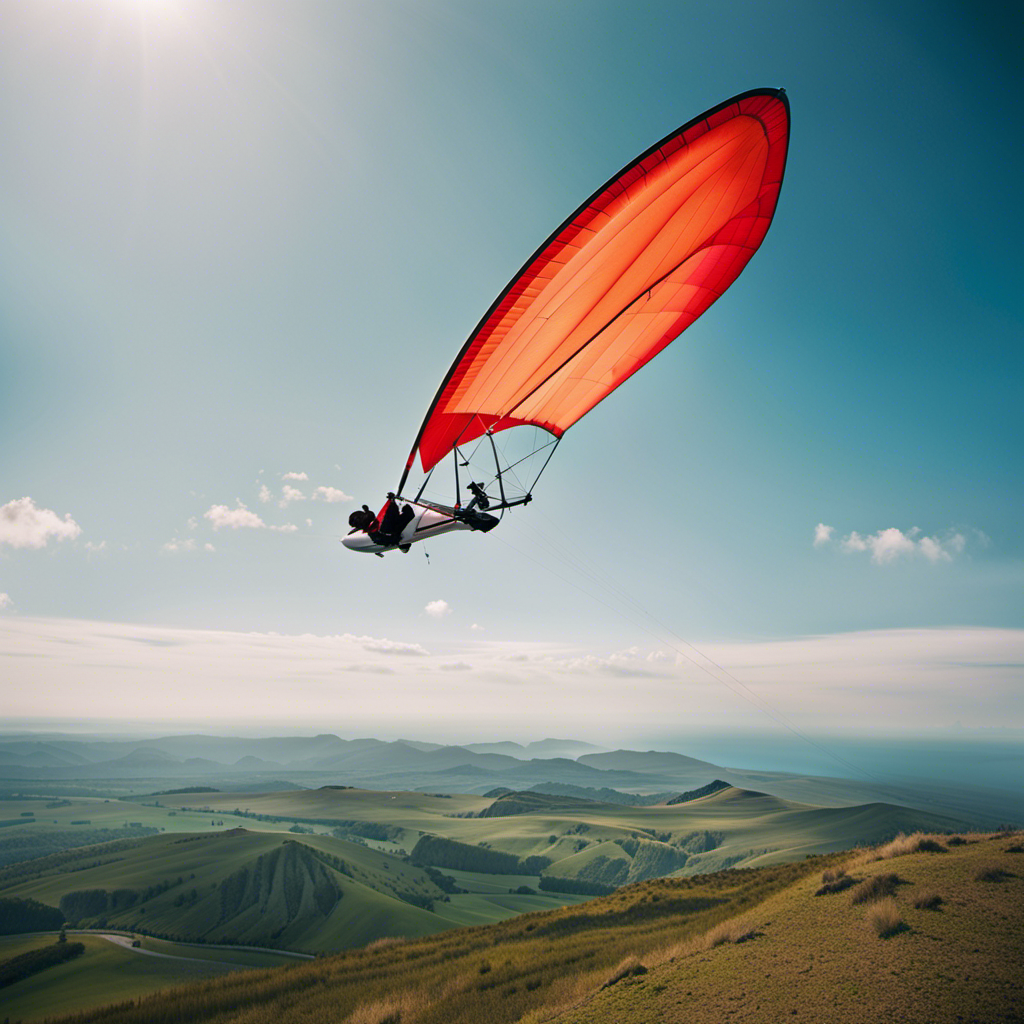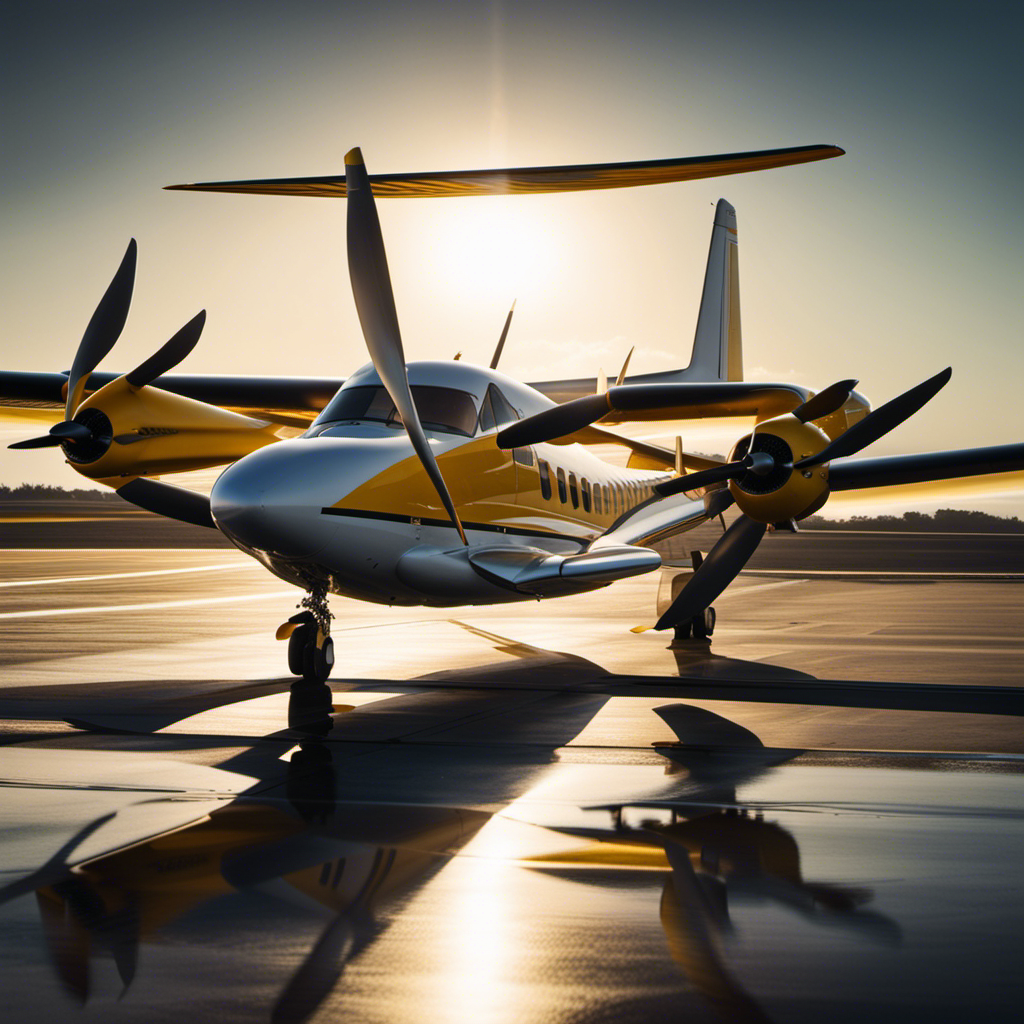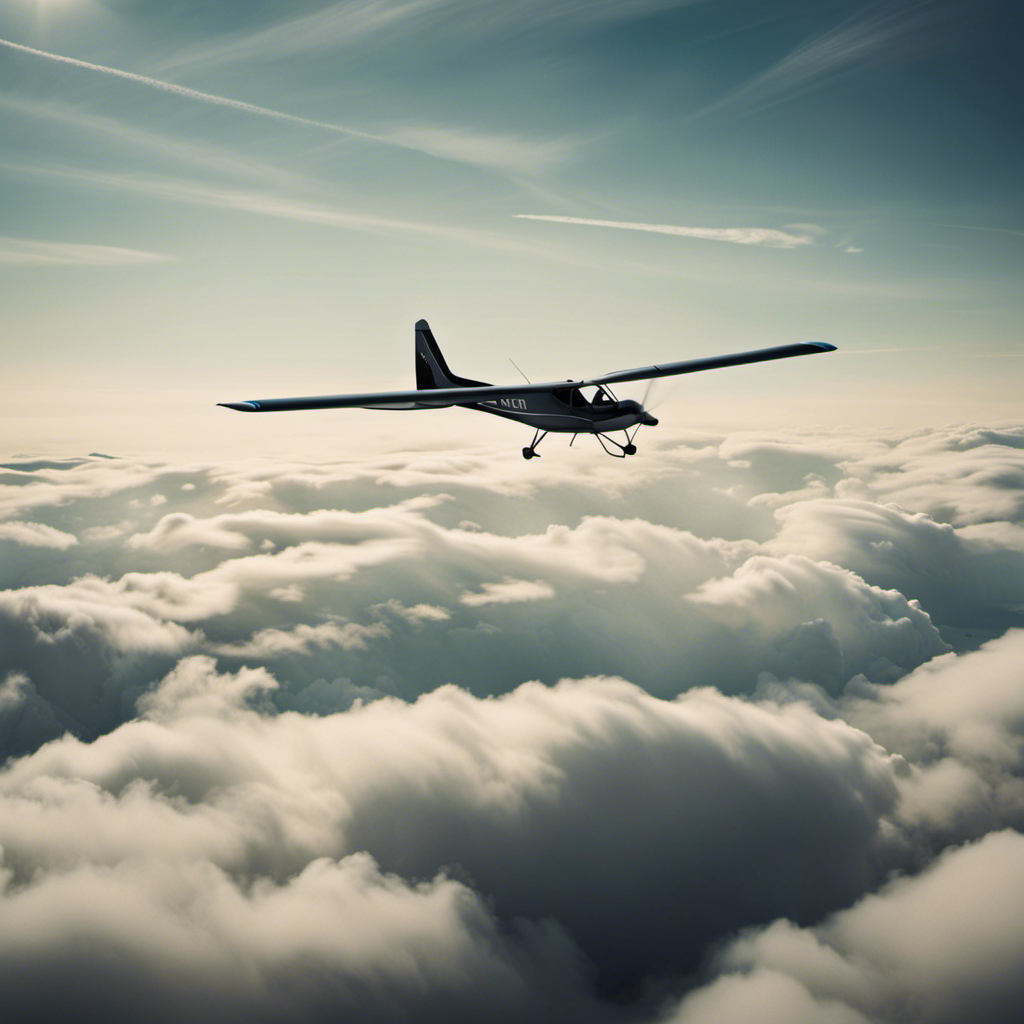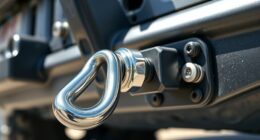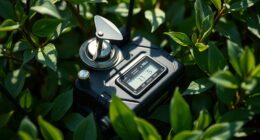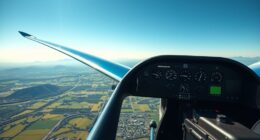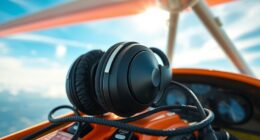As a hang glider pilot, I have always been fascinated by the concept of wing loading. Wing loading is the aircraft’s weight divided by its wing surface area, and it plays a crucial role in determining the performance and handling of the glider during flight.
Understanding this concept is essential for every hang glider enthusiast, as it allows us to optimize our flight experience and make informed decisions about adjusting wing loading.
So, let’s dive into the world of wing loading and explore its impact on hang glider flight.
Key Takeaways
- Wing loading refers to the calculation of the weight supported by the wings of a hang glider, and it is an important factor in determining the flight characteristics of the glider.
- Accurate wing loading calculation is crucial for safety as it affects the stability and maneuverability of the hang glider.
- The weight of the hang glider and pilot, as well as the size and design of the wings, significantly impact the wing loading.
- Adjusting wing loading based on weather conditions is essential, with higher wing loading being beneficial in strong winds and lower wing loading in light winds.
The Basics of Hang Gliding
Hang gliding is a thrilling sport that involves flying through the air using a lightweight glider. To understand how hang gliding works, it’s important to grasp the concept of lift and how to control the pitch of the glider.
Lift is the force that allows a hang glider to stay airborne. It is generated by the shape of the glider’s wings, which are specifically designed to create upward lift when air flows over them. By understanding lift, hang gliders can manipulate their wings to gain altitude or maintain a steady flight.
Controlling the pitch of a hang glider is crucial for maintaining stability and controlling speed. Pitch refers to the upward or downward angle of the glider’s nose. By shifting their body weight, hang gliders can adjust the pitch of the glider. Leaning forward increases the pitch angle, causing the glider to descend, while leaning back decreases the pitch angle, resulting in a climb.
Now that we have a basic understanding of lift and controlling pitch, we can move on to exploring the concept of wing loading and its importance in hang gliding.
Understanding Wing Loading
Wing loading is a crucial concept in hang glider performance. It refers to the amount of weight that each square foot of wing surface area must support.
The calculation of wing loading involves dividing the total weight of the hang glider, including the pilot, by the wing surface area.
Understanding wing loading is essential because it directly affects the glider’s maneuverability, stability, and overall flight characteristics.
Definition and Calculation of Wing Loading
In order to determine the wing loading of a hang glider, you need to divide the weight of the glider by the total area of its wings. This calculation accuracy is crucial because wing loading plays a significant role in a hang glider’s maneuverability.
Wing loading refers to the amount of weight that each unit of wing area must support. A higher wing loading means that the glider has to generate more lift to stay airborne, which can affect its maneuverability. Hang gliders with lower wing loading tend to have better maneuverability as they require less lift to maintain flight.
Therefore, accurately calculating wing loading is essential for understanding how a hang glider will perform in terms of maneuverability. With this understanding, we can now explore the importance of wing loading in hang glider performance.
Importance of Wing Loading in Hang Glider Performance
To accurately understand how a hang glider will perform in terms of maneuverability, you need to consider the importance of wing loading. Wing loading refers to the amount of weight that each unit of wing area must support. The distribution of weight across the wings is crucial for achieving optimal performance.
Here are three key reasons why wing loading is vital for hang glider performance:
- Efficient lift generation: Proper wing loading ensures that the wings generate enough lift to support the weight of the glider, allowing it to stay airborne.
- Maneuverability: The right wing loading enables the hang glider to respond quickly and smoothly to pilot inputs, facilitating precise turns and maneuvers.
- Stability: Correct weight distribution and wing loading contribute to the overall stability of the glider, making it more predictable and easier to control.
Understanding the impact of wing loading on maneuverability sets the foundation for exploring the various factors that affect it. These factors include pilot weight, equipment weight, and wing design.
Factors Affecting Wing Loading
One important factor affecting wing loading is the weight of the hang glider. Wing loading refers to the amount of weight that is supported by the wings of the glider. In order to achieve optimal wing loading conditions, it is important to consider several factors.
First, the weight of the hang glider itself plays a crucial role. A lighter glider will have a lower wing loading, which allows for better maneuverability and control. On the other hand, a heavier glider will have a higher wing loading, resulting in reduced maneuverability and increased stall speed.
Another factor that affects wing loading is the pilot’s weight. The combined weight of the pilot and the glider must be taken into account when determining the optimal wing loading conditions. If the pilot is too heavy for the glider, the wing loading will be too high, leading to poor performance and increased risk of stall.
Furthermore, the size and design of the wings also impact wing loading. Hang gliders with larger wings generally have lower wing loading, allowing for smoother flights and better lift-to-drag ratios. Conversely, hang gliders with smaller wings tend to have higher wing loading, resulting in faster speeds but reduced maneuverability.
Impact of Wing Loading on Flight Characteristics
The weight of the pilot and the design of the wings have a significant impact on how the hang glider performs during flight. When it comes to wing loading, which is the amount of weight supported by the wings per unit of wing area, it is important to find the right balance for optimal flight characteristics. Here are some key points to consider:
-
Adjusting wing loading can affect the glider’s stability and maneuverability. Higher wing loading can result in a faster and more stable glider, while lower wing loading can enhance maneuverability but may reduce stability.
-
Safety considerations are paramount when adjusting wing loading. It is crucial to ensure that the glider remains within its designed limits to prevent structural failure or loss of control.
-
Pilots should carefully assess their weight and the weight of any additional equipment to determine the appropriate wing loading for their glider.
-
The design of the wings, including their shape and structural integrity, plays a vital role in handling different wing loadings. Pilots must adhere to the manufacturer’s guidelines for wing loading to maintain safety.
-
Regular inspections and maintenance are essential to ensure the wings can handle the adjusted wing loading and maintain optimal performance.
Considering these factors, finding the optimal wing loading for different conditions is crucial for safe and efficient hang glider flight. It allows pilots to achieve the desired performance while prioritizing safety and control.
Optimal Wing Loading for Different Conditions
In my experience as a hang glider pilot, I’ve found that high wing loading is essential for flying in strong winds. A higher wing loading allows for increased stability and control, reducing the risk of being blown off course or losing control in turbulent conditions.
Conversely, in light winds, a low wing loading is preferable. It allows for increased lift and maneuverability, enabling the pilot to stay aloft and make precise adjustments to their flight path.
High Wing Loading for Strong Winds
When hang gliding in strong winds, it’s important to have a high wing loading. Wing loading refers to the amount of weight that is supported by the wing area of the hang glider. Having a high wing loading offers several benefits in such conditions.
Firstly, it improves the overall stability of the glider, allowing it to resist turbulence and gusts of wind. Secondly, a higher wing loading enhances the maneuverability of the hang glider, enabling the pilot to make quick and precise turns. With a higher wing loading, the glider responds faster to control inputs, making it easier to navigate through turbulent air.
Transitioning into the subsequent section about low wing loading for light winds, it is important to note that in calmer conditions, a different approach is needed.
Low Wing Loading for Light Winds
Transitioning into lighter wind conditions, it’s crucial to have a low wing loading to optimize performance. Adjusting wing loading is a key factor in adapting to changing wind speeds.
Wing loading refers to the amount of weight that is supported by the wings of a hang glider. When wind conditions are lighter, reducing wing loading allows for improved maneuverability and control.
By decreasing the weight-to-wing area ratio, pilots can increase the glide ratio and enhance their ability to stay aloft in these conditions. However, it’s important to consider safety considerations when adjusting wing loading.
Decreasing wing loading too much can lead to reduced stability and increased susceptibility to turbulence. Finding the right balance between wing loading and safety considerations is crucial for a successful flight.
In the subsequent section, we will explore the various safety considerations related to wing loading.
Safety Considerations and Wing Loading
When it comes to wing loading, there are important limits that need to be considered for both safety and performance. Understanding the maximum and minimum wing loading limits is crucial in ensuring the aircraft operates within safe parameters.
Improper wing loading can have detrimental effects, such as reduced maneuverability and increased stall speeds, which can compromise the safety and control of the aircraft.
Maximum and Minimum Wing Loading Limits
The maximum and minimum wing loading limits for hang gliders determine their performance and safety. Wing loading is the ratio of the weight of the glider to the area of its wings. It is an important factor that affects how the glider handles and maneuvers in flight. The maximum wing loading refers to the upper limit of weight that can be safely supported by the wings. Going beyond this limit can lead to reduced maneuverability and increased risk of stalling or structural failure. On the other hand, the minimum wing loading represents the lower limit of weight that ensures proper control and stability. Insufficient wing loading can result in poor handling and difficulty in maintaining altitude. Finding the right balance between maximum and minimum wing loading is crucial for optimal performance and safety in hang gliding.
| Wing Loading Range | Description |
|---|---|
| Low Wing Loading | Below the minimum wing loading limit, which may result in poor handling and difficulty in maintaining altitude. |
| Optimal Wing Loading | Within the recommended range, providing good control and stability. |
| High Wing Loading | Approaching or exceeding the maximum wing loading limit, leading to reduced maneuverability and increased risk of stalling or structural failure. |
Improper wing loading can have significant effects on the performance and safety of a hang glider.
Effects of Improper Wing Loading
Improper wing loading can greatly impact the performance and safety of a hang glider. The effects of inadequate wing loading include reduced stability and control, increased stall speed, and poor maneuverability.
When a hang glider is underloaded, it becomes more prone to turbulence and can be difficult to handle in windy conditions. On the other hand, excessive wing loading can lead to a higher stall speed, making it harder to take off or land safely. It also reduces the glider’s maneuverability and increases the risk of a collapse.
Both inadequate and excessive wing loading have serious consequences that can compromise the pilot’s safety and the overall performance of the hang glider. To address these issues, adjusting wing loading is necessary to optimize the glider’s flight characteristics and ensure a safer and more enjoyable experience.
Adjusting Wing Loading
You can adjust the wing loading of a hang glider to improve its performance. One way to do this is by adjusting the wing pitch. By changing the angle of the wing relative to the airflow, you can modify the lift and drag forces acting on the glider. This adjustment can be made by changing the position of the control bar, which is connected to the wing’s leading edge. A proper wing pitch can help optimize the glider’s performance and stability.
To determine the ideal wing loading for your hang glider, you can refer to a wing loading chart. This chart provides information on the recommended range of wing loading for different types of gliders. It takes into account factors such as pilot weight, wing area, and glider design. By matching your weight with the appropriate wing loading range, you can ensure optimal flight characteristics and maneuverability.
Adjusting the wing loading of a hang glider is crucial for achieving the desired performance enhancements. By finding the right balance between pilot weight and wing area, you can optimize the glider’s lift-to-drag ratio and maximize its glide efficiency. This can result in improved speed, maneuverability, and overall flight performance.
It is important to consult the manufacturer’s guidelines and seek professional advice when adjusting the wing loading of your hang glider to ensure safe and effective modifications.
Wing Loading and Performance Enhancements
Adjusting wing loading can significantly enhance the performance of a hang glider. Wing loading optimization is a crucial aspect of improving the overall capabilities of this aircraft. By adjusting the wing loading, pilots can achieve better maneuverability, increased speed, and improved stability.
One of the key performance enhancements that can be achieved through wing loading optimization is increased glide ratio. The glide ratio is the distance a hang glider can travel horizontally for every meter it descends. By adjusting the wing loading, pilots can achieve a higher glide ratio, allowing them to cover greater distances and stay aloft for longer periods of time.
Another performance enhancement that can be achieved through wing loading optimization is improved speed. By adjusting the wing loading to a higher value, pilots can increase the overall speed of the hang glider. This is particularly beneficial in competitive flying, where every second counts.
Lastly, wing loading optimization can also lead to improved stability. By adjusting the wing loading to a lower value, pilots can achieve a more stable flight, reducing the risk of stalls and other aerodynamic disturbances.
Understanding the relationship between wing loading and hang glider types is essential for optimizing the performance of this aircraft. By considering factors such as pilot weight, wing design, and flying conditions, pilots can determine the optimal wing loading for their specific needs. This knowledge allows them to maximize the performance of their hang glider and enjoy a safer and more exhilarating flying experience.
Wing Loading and Hang Glider Types
When it comes to hang gliders, there are two main types to consider: beginner-friendly hang gliders and high-performance hang gliders.
Beginner-friendly hang gliders are designed with novice pilots in mind, offering ease of use and stability.
On the other hand, high-performance hang gliders are built for experienced pilots who seek speed, agility, and advanced maneuverability.
It is important to understand the differences between these two types in order to choose the appropriate hang glider for your skill level and flying goals.
Beginner-friendly Hang Gliders
If you’re a beginner, you’ll want to consider hang gliders that are designed to be user-friendly. These hang gliders come with a range of beginner-friendly features and safety measures to ensure a smooth and safe learning experience.
Some of the features you should look for include a stable and forgiving wing design, easy-to-use control systems, and durable construction. Safety measures such as reinforced leading edges, padded harnesses, and quick-release systems are also important to consider.
These beginner-friendly hang gliders are designed to provide stability and ease of control, allowing beginners to learn and progress at their own pace. As you develop your skills and gain experience, you can transition to high-performance hang gliders that offer greater speed, maneuverability, and performance without compromising safety.
High-performance Hang Gliders
After discussing beginner-friendly hang gliders, let’s now delve into the world of high-performance hang gliders. These cutting-edge gliders are designed for experienced pilots who seek the thrill of pushing the limits of flight.
Advanced hang glider technology has led to remarkable improvements in performance and aerodynamics, allowing pilots to achieve greater speeds and maneuverability in the sky.
Here are four key features of high-performance hang gliders:
- Enhanced wing design: These gliders often feature sleek, tapered wings that reduce drag and improve stability at high speeds.
- Lightweight materials: Advanced composite materials, such as carbon fiber, are used to construct the frame, reducing weight and increasing maneuverability.
- High aspect ratio: The wings of high-performance gliders have a higher aspect ratio, which enhances lift and reduces drag.
- Improved control systems: These gliders are equipped with state-of-the-art control systems, allowing pilots to make precise adjustments to their flight path.
With these advancements, high-performance hang gliders offer experienced pilots an exhilarating flying experience like no other.
Now, let’s move on to the conclusion and further resources to wrap up our discussion on hang gliders.
Conclusion and Further Resources
To learn more about hang gliders and their wing loading, check out the resources provided for further reading.
In conclusion, understanding the concept of wing loading is crucial for any hang glider pilot. It determines the performance and handling characteristics of the glider, as well as the safety margins during flight.
By calculating the wing loading, pilots can determine the amount of weight exerted on each square foot of wing area. This information allows them to assess the suitability of the glider for different flying conditions and pilot skill levels.
It is important to note that a higher wing loading generally results in a faster and more responsive glider, but it also requires a higher level of piloting skills to handle. On the other hand, a lower wing loading offers a more forgiving and stable flight experience, but may sacrifice some performance capabilities.
For further resources on hang glider wing loading, I recommend reading books and articles specific to hang gliding aerodynamics, flight performance, and safety guidelines.
Frequently Asked Questions
Are there any regulations or limits on the wing loading of a hang glider?
There are regulations and limits on the wing loading of hang gliders due to safety concerns. These regulations ensure that the wing loading is within safe limits to prevent accidents and maintain the overall safety of hang gliding activities.
How does the wing loading of a hang glider affect its stability during flight?
Wing loading affects the stability of a hang glider during flight. Higher wing loading increases stability, as the increased weight helps resist turbulence. However, excessive wing loading can make the glider less maneuverable and increase the risk of stall.
Can the wing loading of a hang glider be adjusted or modified by the pilot?
Yes, the wing loading of a hang glider can be adjusted or modified by the pilot. The pilot has control over the wing loading by adding or removing weight from the glider.
What are the potential risks or dangers associated with operating a hang glider with a high wing loading?
What potential injuries could I face if I operate a hang glider with high wing loading? To ensure safety, it is crucial to follow safety precautions such as proper training, understanding weight limits, and maintaining proper equipment.
How does the wing loading of a hang glider impact its maneuverability and speed?
The wing loading of a hang glider significantly affects its maneuverability and speed. Higher wing loading can reduce maneuverability and increase speed, while lower wing loading can enhance maneuverability at the cost of speed.
Conclusion
In conclusion, understanding the concept of wing loading is crucial for hang glider pilots. It determines the amount of weight the wings can support and directly affects flight characteristics. By adjusting wing loading, pilots can optimize their glider’s performance for different conditions.
However, it is important to note that increasing wing loading beyond a certain point can lead to reduced safety and maneuverability. So, finding the right balance is key.
Remember, in hang gliding, as in life, it’s all about finding the perfect balance between freedom and control. Keep soaring!
With a heart that soars as high as the skies, Aria, affectionately known as “Skylark,” is the driving force behind Soaring Skyways. Her journey into the gliding world began as a young dreamer gazing up at the soaring birds, yearning to experience the weightlessness and freedom they embodied. With years of experience both in the cockpit and behind the scenes, Aria’s commitment to the gliding community is unwavering.
